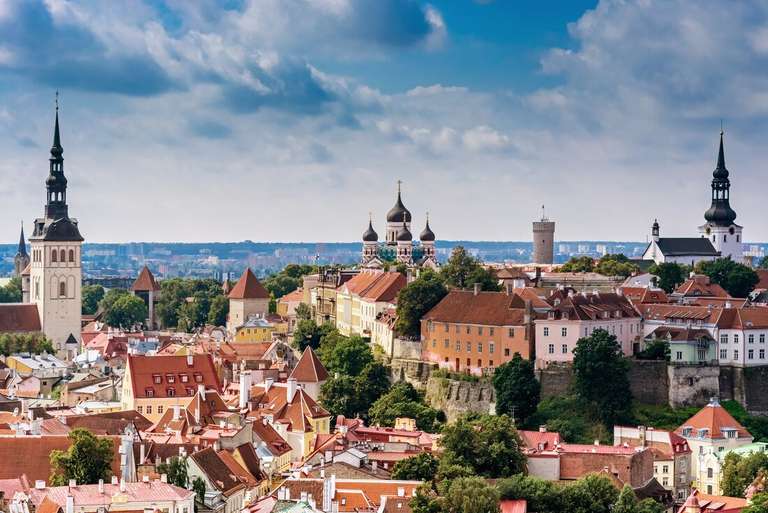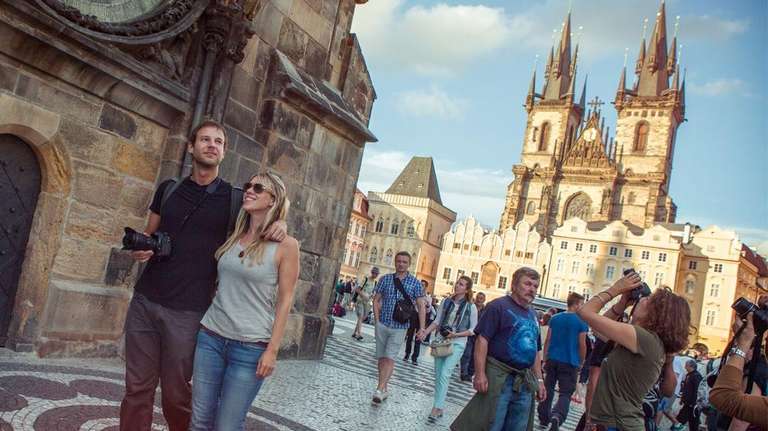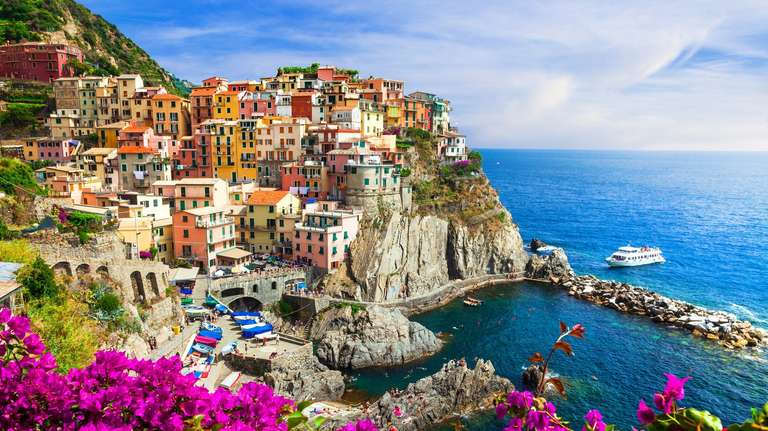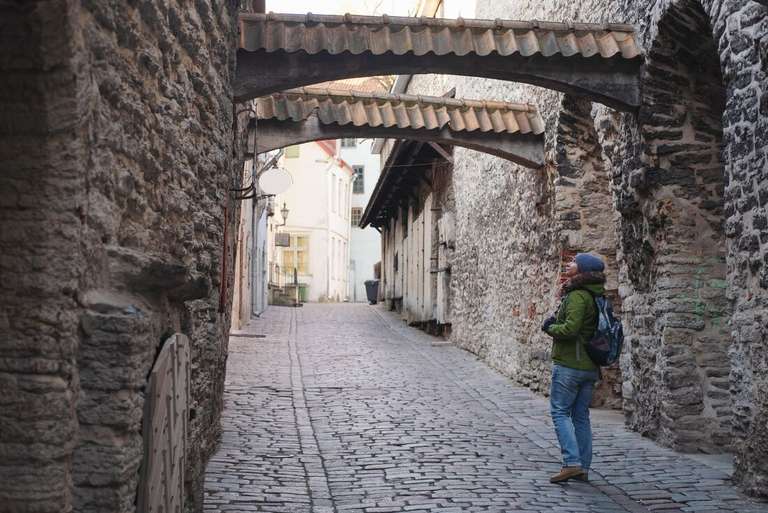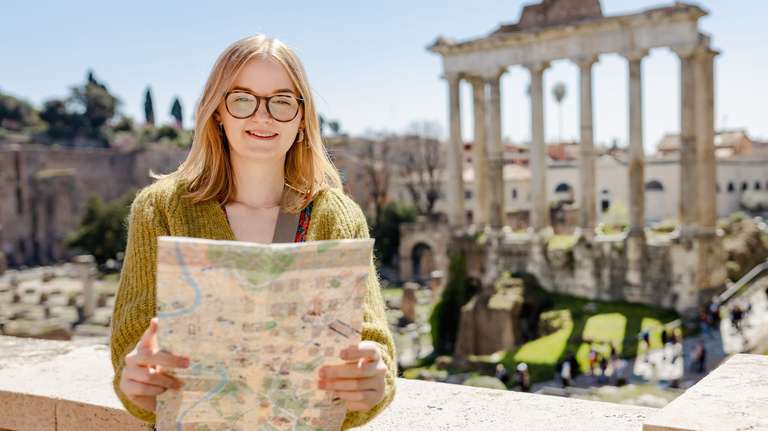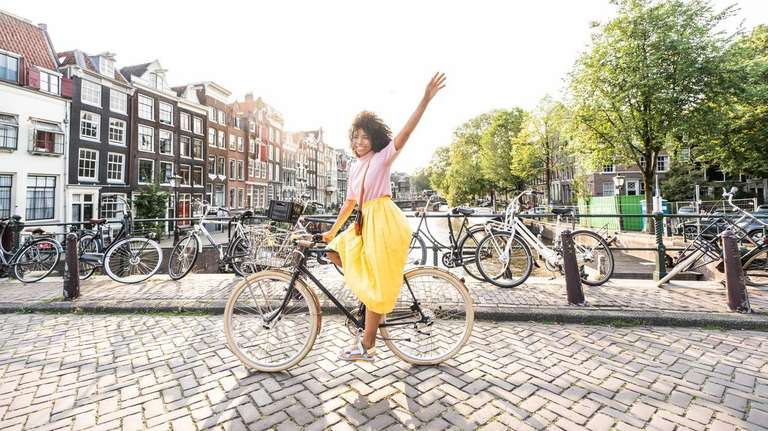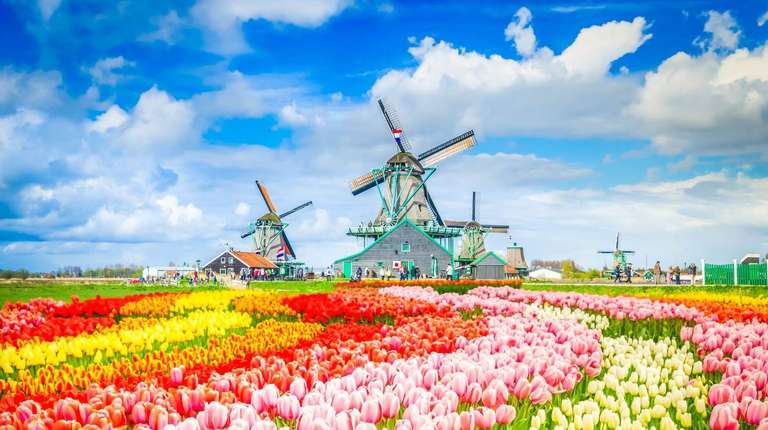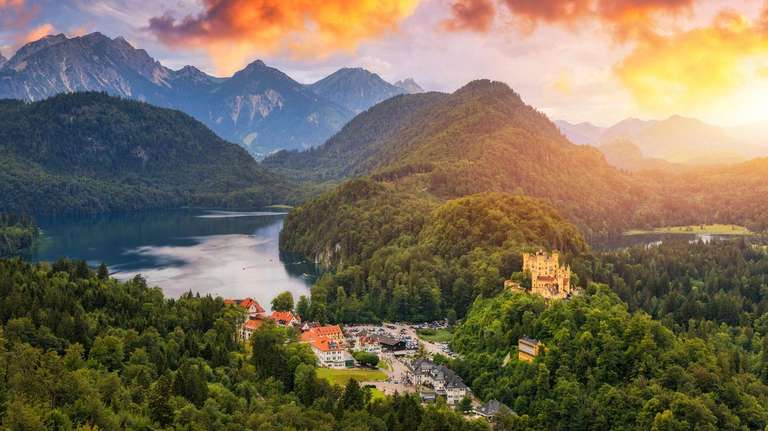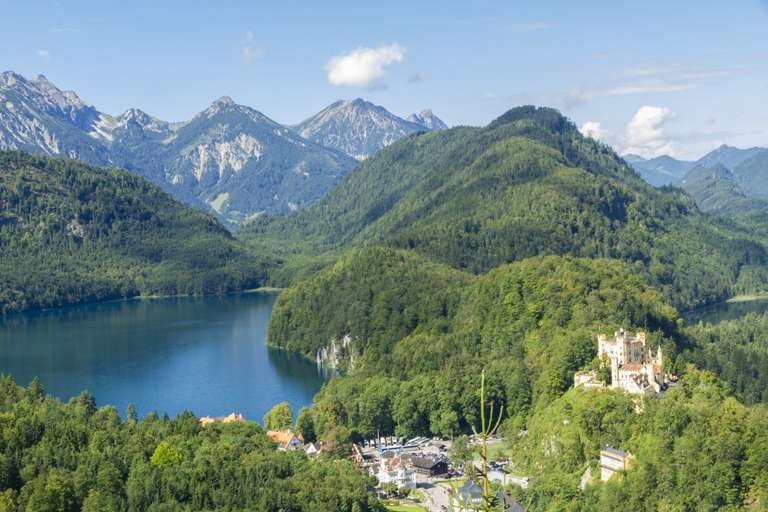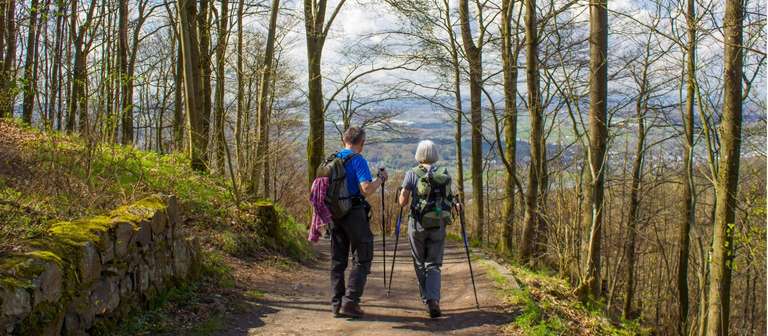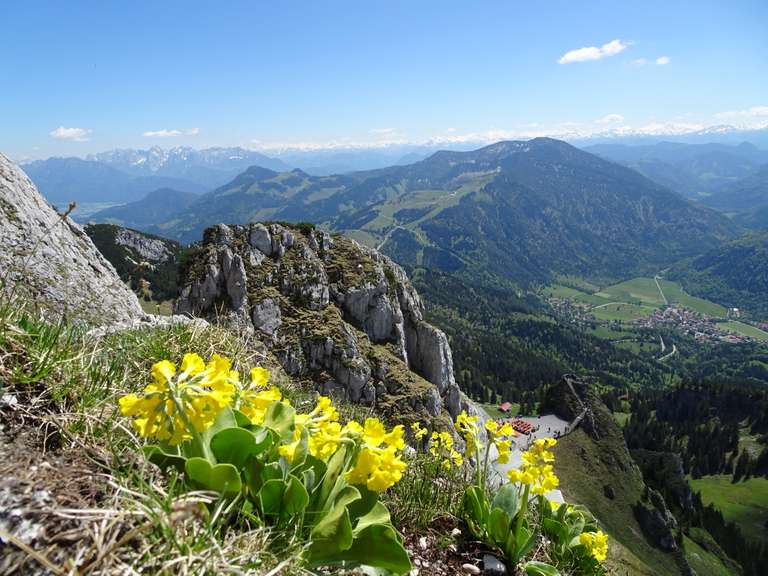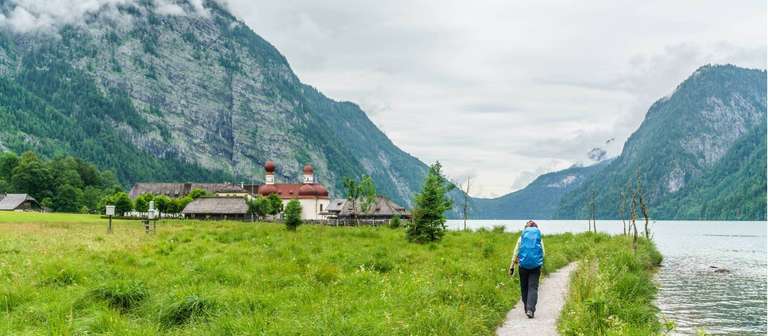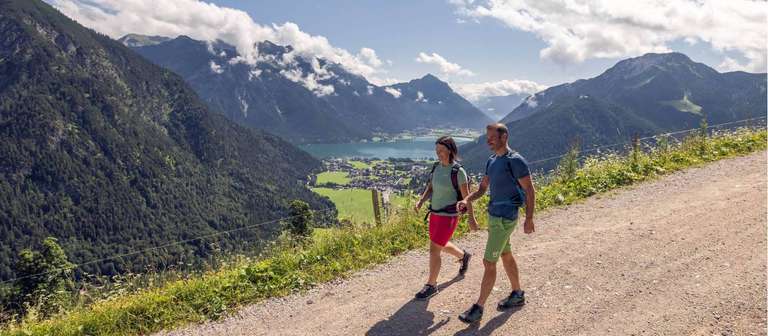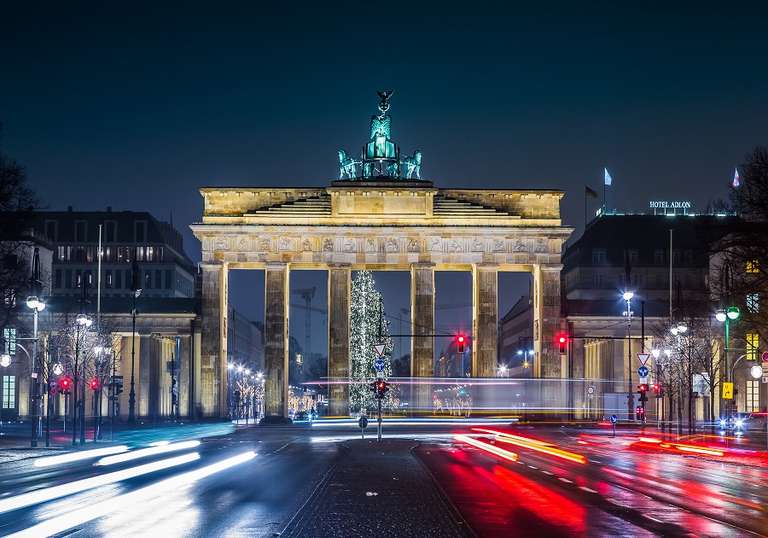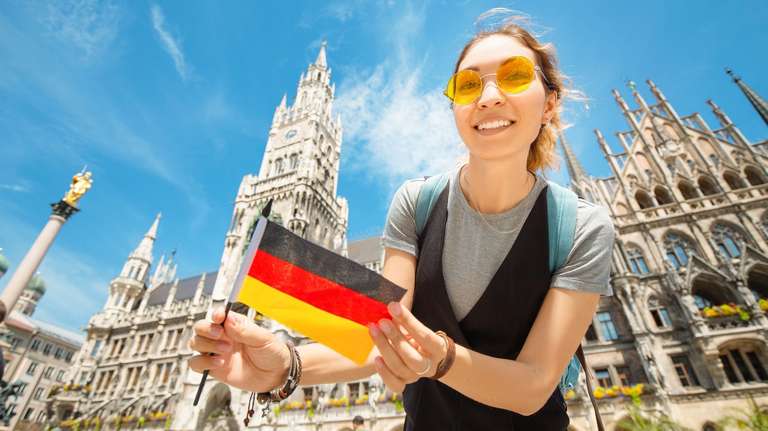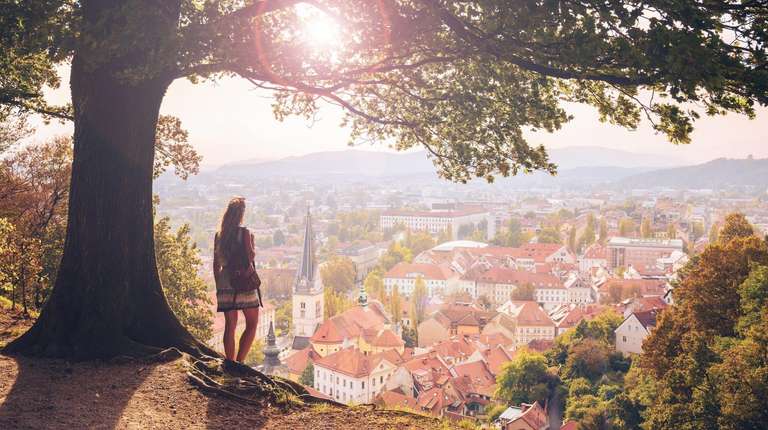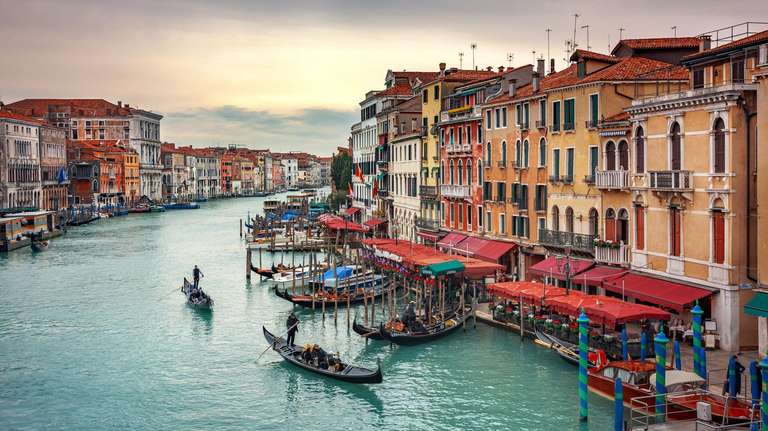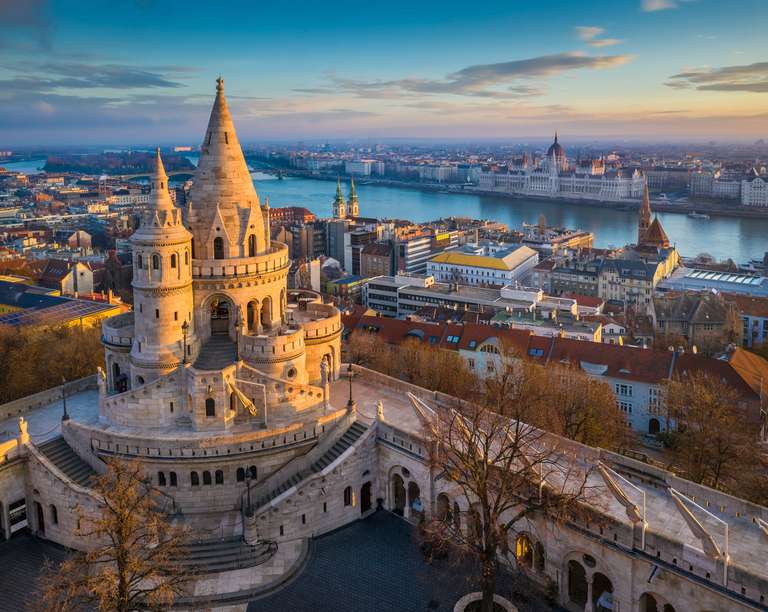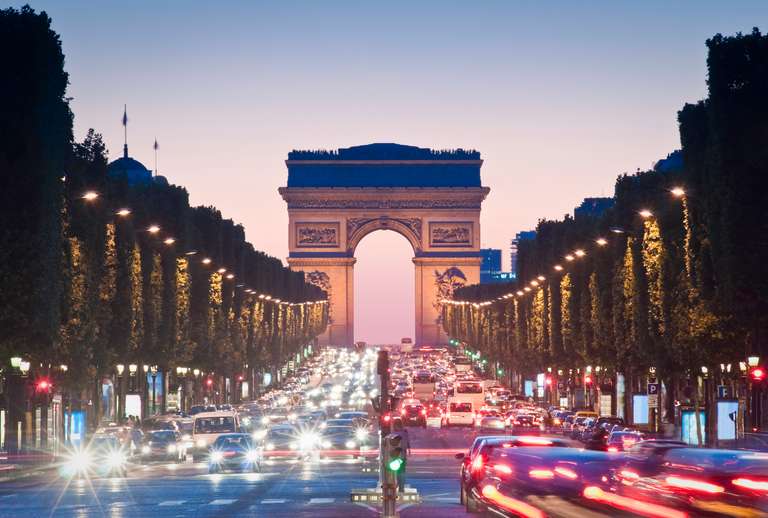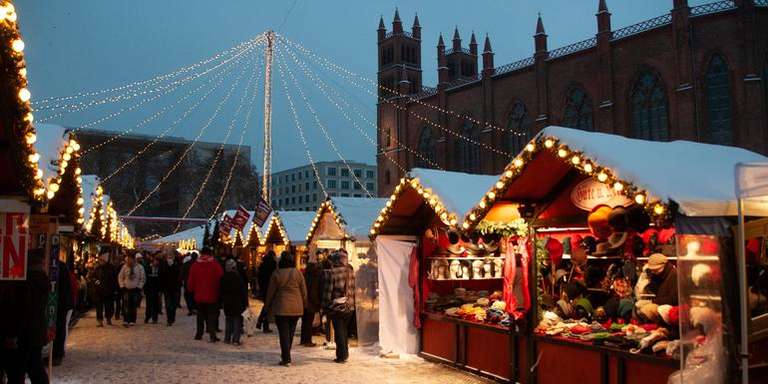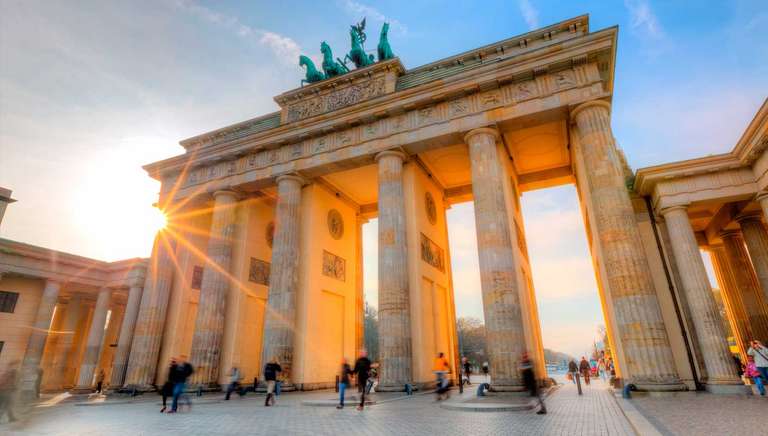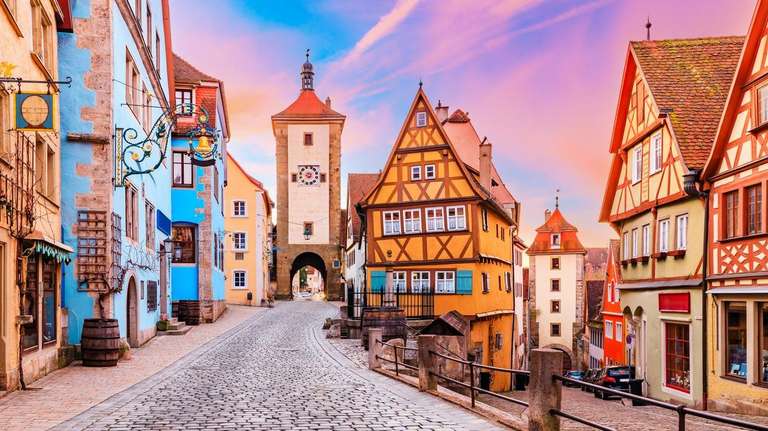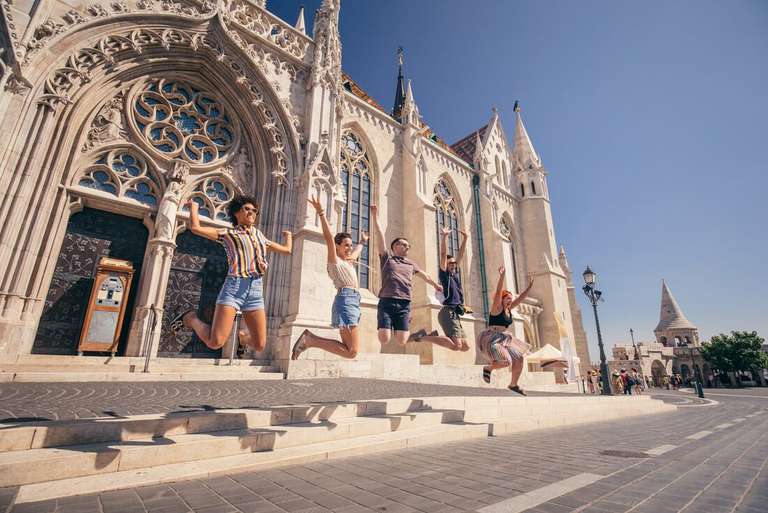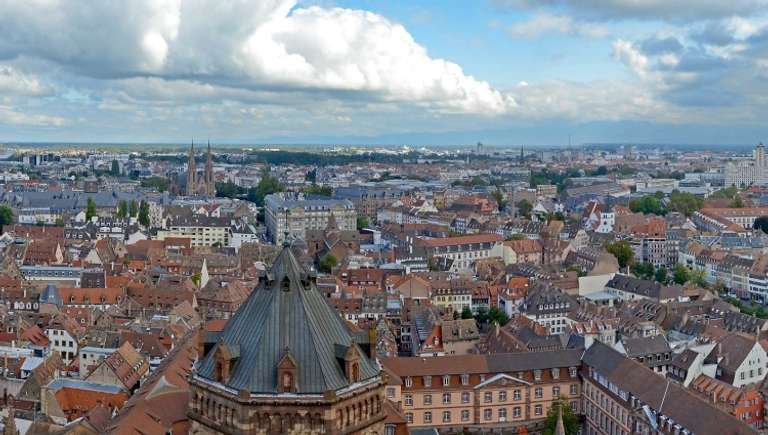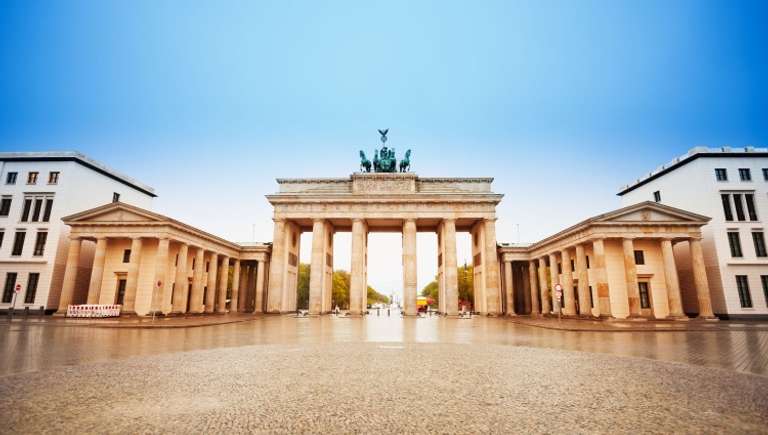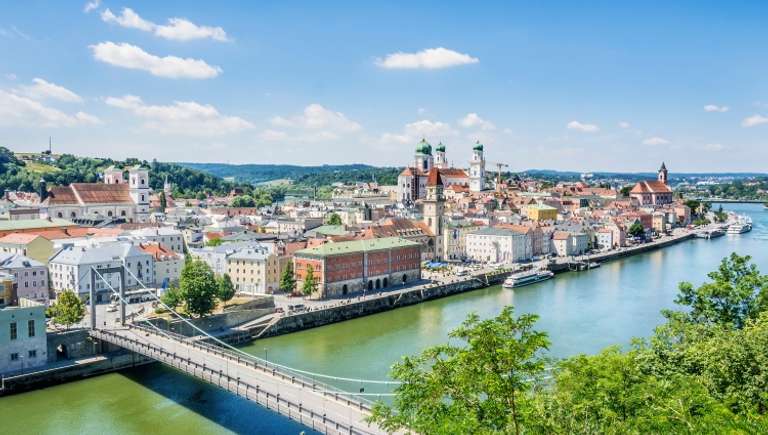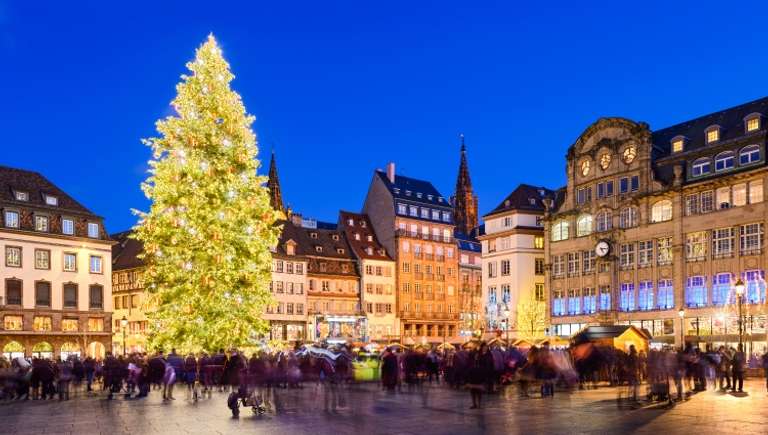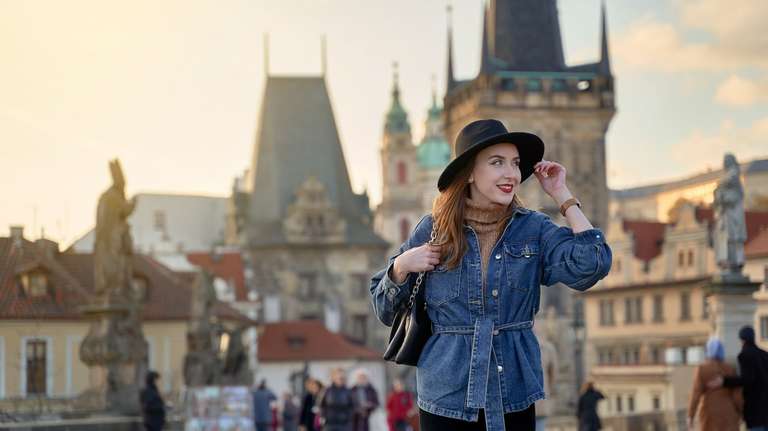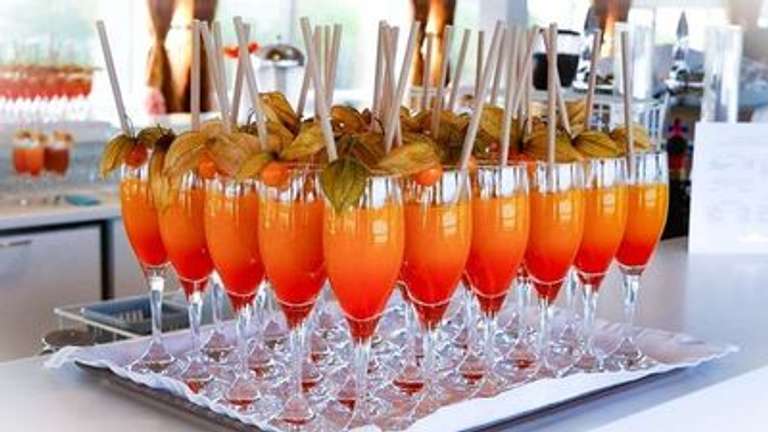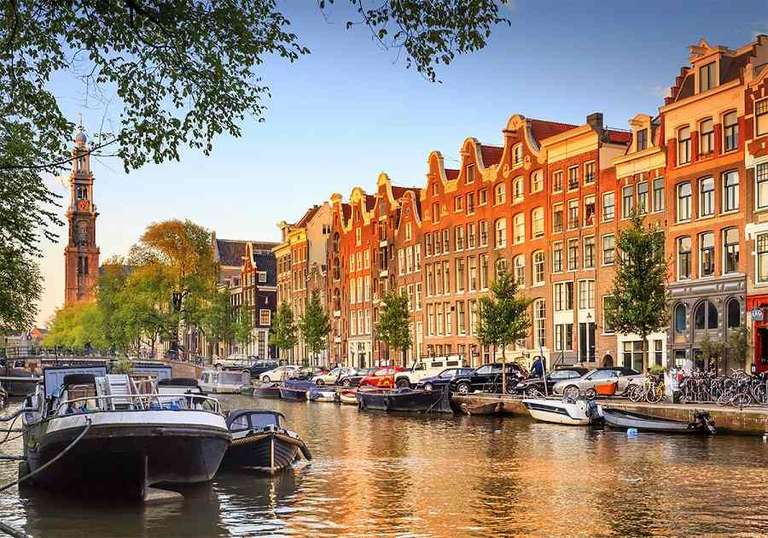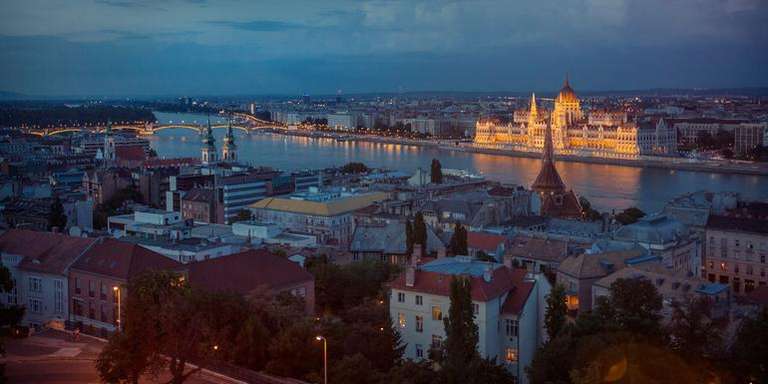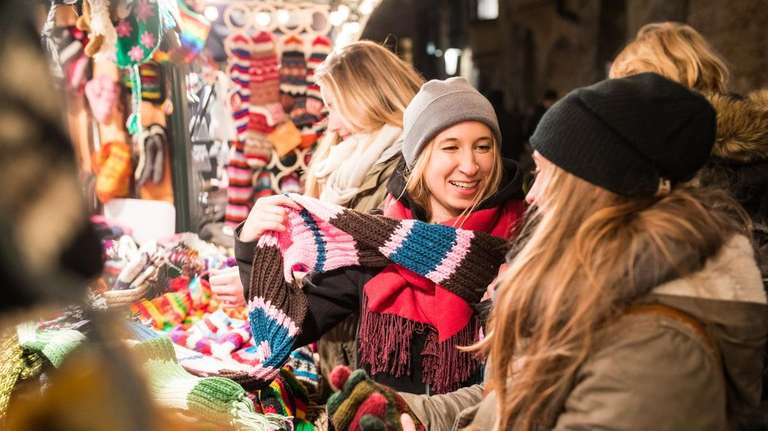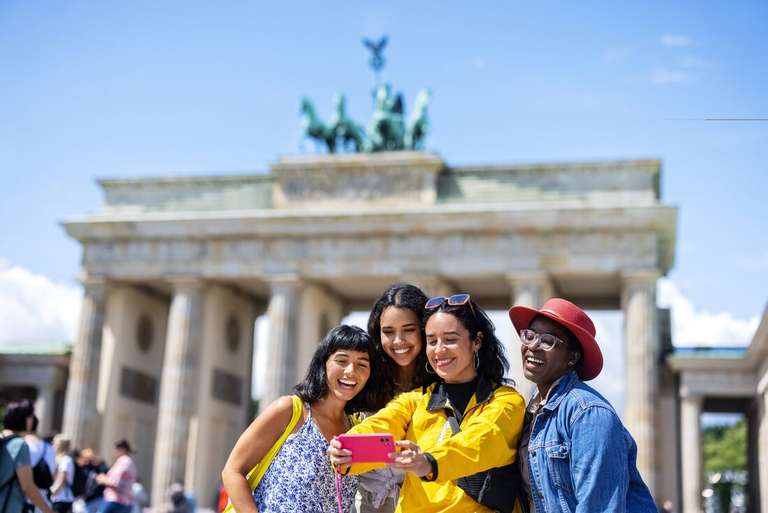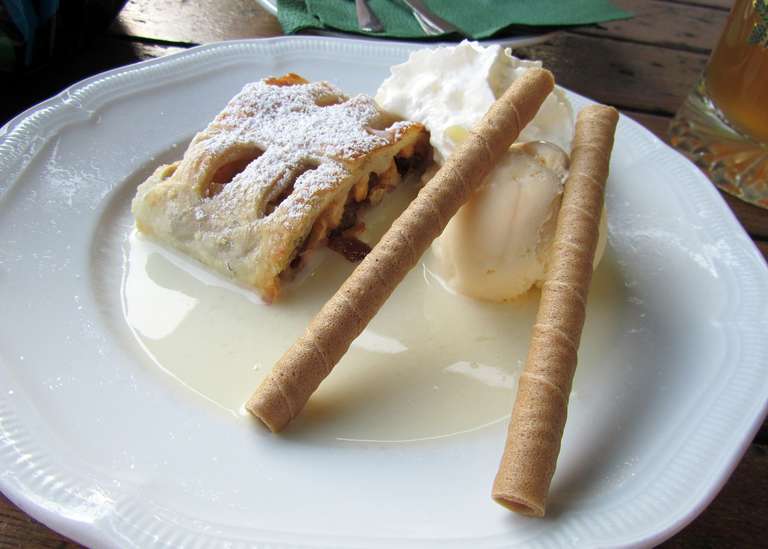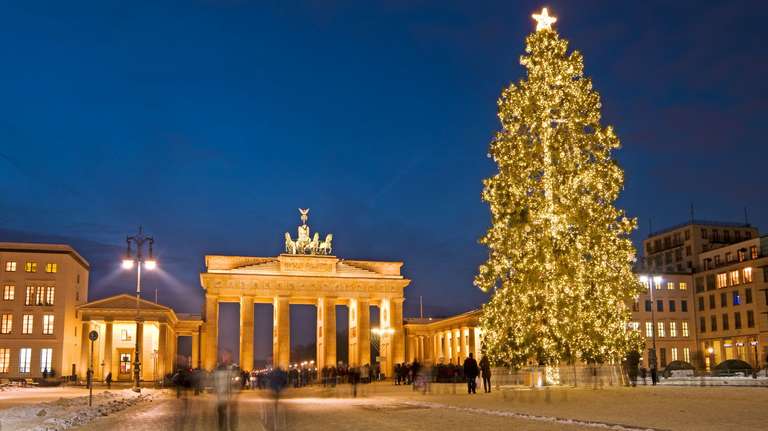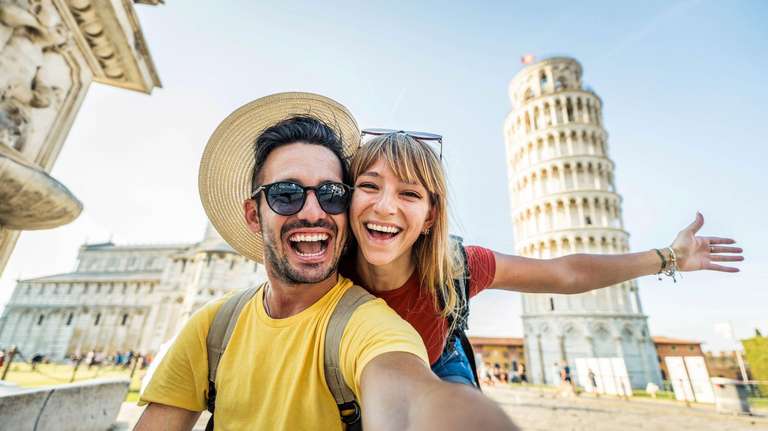Things to Do in Germany

- Lauren F
- From
- Lauren F
- From
- Thasaangan D
- From
- Rachel C
- From
1. Visit Museums in Berlin

Berlin is the capital of Germany and a cultural and historical hub, making it an indispensable stop for any traveler. With a legacy intertwined with pivotal historical events and birthing grounds for influential art movements, the city offers an expansive selection of over 190 museums. Whether you are drawn to the poignant narratives of the Nazi era, internationally acclaimed art pieces, real treasures, or modern art, a trip to Berlin will leave you with a better understanding of the vibrant tapestry of shared heritage.
Recommended locations:
- Topography of Terror is situated on the grounds of the former Gestapo and SS headquarters. This outdoor and indoor documentation center meticulously examines the intricate history of Nazi Germany through photographs, texts, audio recordings, and excavated prison cells and walls. A tour of this museum has often been described as both cathartic and eye-opening.
- DDR Museum utilizes highly interactive and immersive exhibits to reiterate the daily lives of East German people during the Cold War era, allowing visitors to envision the political climate and personal constraints placed upon citizens by the Socialist regime. Visitors can explore a replicated East Berlin apartment, sit behind the wheel of a Trabant car, get locked up in a Stasi prison cell, and even wear a “bug” that gives them the illusion of being under surveillance.
- Acknowledged as a UNESCO World Heritage site, Museum Island hosts five distinguished museums, including the well-known Pergamon and Neues Museum. The collection spans various periods and cultures, contributing significantly to the city's cultural tapestry.
- The East Side Gallery exhibits colorful murals on the longest remaining segment of the Berlin Wall. In this context, this gallery has attained the status of a living museum and is a top attraction in Berlin.
Best time to visit: The best time to visit Germany, which is also the peak tourist season, is from June through August. Museum enthusiasts should visit during the shoulder seasons of spring (April to June) and fall (September to October) when there is less congestion. Better yet, visit during Berlin’s cooler months and enjoy being indoors.
Insider tip: Capitalize on cost-saving opportunities by availing of free entry days at select ticketed museums. Museum Island, for example, extends complimentary admission every first Sunday of the month.
2. Embark on a Black Forest Hiking Adventure

Germany, boasting 11.4 million hectares of lush forests, is a haven for outdoor enthusiasts. With two-thirds of Germans engaging in the popular activity of wandern (hiking) annually, the country offers an extensive 200,000-kilometer trail network. The Black Forest, nestled in southwest Germany along the French border, is the most famous forest and the prettiest place in Germany. It stands out for its dense evergreen landscapes and charming villages. Home to 56 fantastic trails, it beckons adventurers to explore its water bodies, mountain huts, valleys, and iconic Black Forest gateau.
Recommended trails:
- Feldbergsteig trail is an 8.5-kilometer-long moderate trail and one of the most popular hikes in the Black Forest. Leading through gorgeous scenery in the Feldberg Nature Reserve, the trail traverses flowering meadows, dense forest, and alpine terrain with panoramic views.
- Schwarzenbach-Rundweg trail is a 6.4-kilometer-long loop trail of moderate difficulty that takes you around the Schwarzenbach Reservoir. It offers fantastic overlooks of the shimmering lake as well as the surrounding peaks and valleys.
- At 285 km, the Westweg trail is Germany's oldest long-distance hiking trail, established in 1900. The route showcases the entire breadth of the Black Forest, from north to south, including the Black Forest valleys of Enztal, Murgtal, and Kinzigtal and the crest of the Black Forest. Sections can be hiked based on difficulty and duration preferences.
Best time to visit: Summer (June to August) is ideal for hiking in the Black Forest, with comfortable weather to spend most of the day outdoors.
Insider tip: Most trails are well marked, but pay close attention to route marker colors, which can change along the same trail. It's not uncommon to encounter missing markers. You might want to make longer hikes a guided trip.
3. Explore Fairytale Castles in the Romantic Road Region

The Romantic Road in Germany stretches approximately 400 kilometers, offering more than just picturesque landscapes and culinary delights. This road is known for its timbered balconied homes with flower spills, expansive vineyards, and lake and Alps views. The crown jewels of this enchanting route are the magnificent palaces and castles that adorn its path.
Recommended palaces:
- Neuschwanstein Castle is a 19th-century masterpiece nestled at the southern end of the Romantic Road in a hamlet named Hohenschwangau. It is a brisk half-hour walk uphill from Schwangau. Accessible only through guided tours, Neuschwanstein is an iconic example of romantic architecture, often recognized as the inspiration for Disney's fairy-tale castles.
- Hohenschwangau Castle is located slightly south of Neuschwanstein, atop a small hill between the Alpsee and Schwansee. Hohenschwangau is a 19th-century palace with a remarkable history. Despite the upheavals of World War I and World War II, the castle miraculously suffered no damage.
Best time to visit: For an optimal experience, the best time to explore the fairytale castles along the Romantic Road is outside the bustling summer months, preferably during spring, when its flower gardens are in full bloom.
Insider tip: Although you could drive the Romantic Road Region, you could also opt for the train and then cycle your way around nearby castles.
4. Embrace the German Beer Culture in Munich

Munich, often hailed as the world's beer capital, boasts a rich brewing heritage spanning over a century. The city stands out with an impressive array of breweries and claims the title of having more beer gardens than any other in Germany. Renowned for its traditional Bavarian beer styles, Munich offers a unique blend of history and hops. Among its iconic establishments is Hofbräuhaus, one of the city's oldest beer halls. You can also find some of the finest beer gardens of Germany nestled within the expansive English Garden Munich, one of the world's largest urban parks. To truly experience the beer culture in Munich, attending a beer festival as a part of your Munich tour is a must!
Recommended Beer Festivals in Munich:
- Oktoberfest is the world's largest Volksfest held in Munich. This two-week extravaganza, concluding on the first Sunday in October, is a delightful blend of a beer festival and a traveling carnival, offering a genuine taste of Bavarian culture and fostering a strong sense of community.
- Springfest, known locally as Frühlingsfest, is a miniature yet lively version of the Oktoberfest held halfway to the main Oktoberfest celebration month. It offers a taste of Bavarian cheer in a more intimate setting.
Best time to visit: For an immersive beer experience, plan your visit between September and October to coincide with the world-renowned Oktoberfest to mingle with the locals and learn about their culture.
Insider tip: When enjoying Munich's vibrant beer gardens, don't be surprised to find your beer served in a traditional one-liter mug, known as a maß (stein) as the standard size; place your order accordingly.
5. Visit World War II sites

As the epicenter of pivotal events leading up to and during World War II, Germany offers an abundance of memorial sites that confront a fraught history. By visiting places like Nuremberg, Hamburg, Dresden, and Berlin, you can learn about the rise of fascism, the Holocaust, civilian suffering during Allied campaigns, and life in Nazi Germany and postwar Germany. Beyond preserving the past, these locations seek to educate future generations, uphold the dignity of victims, and inspire a commitment to human rights.
Recommended World War II landmarks:
- Sachsenhausen Concentration Camp was one of the first and largest concentration camps established by the Nazis. It provides insight into the brutality of the Holocaust through preserved barracks, gallows, and other structures. The museum also displays art and letters from prisoners.
- House of the Wannsee Conference housed the 1942 meeting where Nazi leaders coordinated plans for the “Final Solution”, resulting in the murders of millions in concentration camps. The exhibit offers a thorough examination through multimedia displays.
- While Checkpoint Charlie recreates the famous border crossing between East and West Berlin, the Berlin Wall Memorial features remains of the original wall and commemorates those killed trying to escape East Germany.
Best time to visit: The Spring months of March and May allow for comfortable weather and lighter crowds. In addition, May also aligns with the annual commemoration of resistance against World War II, which is celebrated in major cities such as Berlin.
Insider tip: Sign yourself up for multi-site passes such as the Berlin WelcomeCard to get around World War II sites at discounted rates.
6. Tour Historic Churches and Cathedrals

Embark on a journey through Germany's rich Christian heritage by exploring its historic churches and cathedrals. Displaying architectural grandeur, these houses of worship stand as testaments to the commanding influence of both the Catholic and Protestant churches over the centuries. From intricate details to imposing scales, these houses of worship are must-visit places for travelers interested in delving into the heart of Germany's religious legacy.
Recommended cathedrals:
- Cologne Cathedral, a UNESCO World Heritage Site, stands as a pinnacle of German Gothic architecture. With construction beginning in the 13th century, this Gothic masterpiece took over 600 years to complete. This iconic structure is a masterpiece and one of the country's most visited tourist attractions.
- Aachen Cathedral, claimed to be the oldest Catholic church in Northern Europe, holds immense historical significance. Over generations, it has served as the solemn site for the coronation ceremonies of numerous German kings and queens.
Best time to visit: All year round.
Insider tip: While there are certain areas in all German cathedrals and churches that are off-limits to tourists or the general public, if you want more access, consider attending a mass, service, or the choir's evensong, as these often allow visitors into normally restricted zones to experience the religious sites in its full intended glory.
7. Cruise the Rhine River

The Rhine River flows through Germany and forms part of the border between Germany and Switzerland. Some of the most popular ports of call along the Rhine include Mannheim, Rudesheim, Koblenz, and Cologne in Germany. A cruise along the Rhine River allows you to take in beautiful scenery across vineyards, medieval castles, Gothic cathedrals, and historic cities. Cruises can either focus solely on the German portion of the Rhine or provide a broader international perspective with stops in the Netherlands and France as well.
Recommended activities:
- Wine tasting at vineyards along the Rhine Valley.
- Sightsee gothic architecture in Cologne, Heidelberg Castle, and the lively markets of Amsterdam.
Best time to visit: Late April to early June and September to early October are considered the best times to cruise the Rhine River due to the mild weather and smaller crowds.
Insider tip: Book a nighttime cruise for the most magical views along the Rhine. Many riverboats offer twilight and evening cruises, where you can witness illuminated castles, bridges, and riverside towns glowing under the moonlight and stars.
8. Check Out Modern Bauhaus Architecture

Pioneered by the Bauhaus art school, Bauhaus architecture principles emphasize the fusion of art, craftsmanship, and technology. Nearly a century later, Bauhaus creations still feel fresh, futuristic, and innovative. Germany, especially Berlin, is home to many prominent examples of Bauhaus buildings and museums, offering visitors a chance to admire this iconic style.
Recommended sites:
- Located in Berlin, the Bauhaus Archive has several exhibits showcasing the evolution of Bauhaus design. Immerse yourself in the movement's history and witness its influence on contemporary architecture and design.
- Journey to Dessau, where the Bauhaus School (Bauhaus Dessau)resided from 1925 to 1932. Marvel at the buildings designed by Walter Gropius and other influential architects associated with the movement. The Dessau complex is a UNESCO World Heritage Site, providing a comprehensive experience of Bauhaus architecture.
Best time to visit: All year round.
Insider tip: Many Bauhaus buildings offer excellent examples of form following function. Notice how design elements like airy spaces, ample sunlight, and minimal adornment enhance livability.
9. Road trip on the German Wine Route

Discover the charm of the oldest of Germany's tourist wine routes, the German Wine Route or Deutsche Weinstrasse. Established in 1935, this scenic route stretches northward, offering a captivating journey through picturesque vineyards and historic wine villages. The wines produced here are primarily white wines such as rieslings, although some red and rosé wines are also grown.
Recommended stops:
- Dürkheim Barrel, the world's largest wine barrel, is one of the most iconic sites along the German Wine Route. Standing tall in the town of Bad Dürkheim, the cask has a capacity of about 1.7 million bottles! Be sure to climb the stairs to the top for panoramic views over the vineyards.
- The German Wine Gate in Schweigen-Rechtenbach is another must-see, which marks the southern terminus point. The towering granite pillars are carved with images representing wine-making history and culture.
Best time to visit: Plan your self-driving trip along the German Wine Route during late April or May, when the vineyards burst with vibrant colors and new life. Alternatively, visit immediately after the late autumn harvest to coincide with open-air wine festivals.
Insider tip: Rent a bike for a leisurely ride along sections of the route so you can stop whenever you please for wine tastings!
10. Indulge in German Cusine

German cuisine reflects the country's diverse culinary history, being a mix of local and regional fare. At its core, German food staples include the famous sausages, potatoes, breads, pork, and beer. From hearty roasts and meat dishes to delicate pastries, Germany's gastronomy takes one on a journey through time and taste. Expect a blend of influence from neighboring countries like Austria and France while also finding cuisine unique to Germany's varied landscape and culture.
Recommended dishes:
- The world-famous Black Forest cake originated from the Black Forest region in southwestern Germany. Indulge in the authentic taste of this decadent chocolate sponge layered with cherry syrup, chocolate shavings, and whipped cream on your German food tour.
- Bratwurst, a quintessentially German sausage, is typically made with veal, pork, or beef. Savor the flavors by ordering it grilled and served with sweet mustard, sauerkraut and pretzel rolls.
- Schnitzel, a popular thin, breaded meat cutlet dish, likely originated in Germany before spreading across Europe. Enjoy an authentic taste by ordering pork or veal schnitzel pan-fried until crispy, with lemon wedges and potato salad or fries on the side.
Best time to visit: All year round.
Insider tip: Pair sweet German rieslings with spicy sausage dishes to balance the heat. Opt for hearty Dunkel beers alongside heavy meat-based specialties like schweinshaxe (pork knuckles).
11. Relax in historic spa towns

Escape to the therapeutic thermal waters and old-world charm of Germany's historic spa towns. For centuries, these destinations have attracted visitors seeking rest, recovery, and rejuvenation. From opulent bathhouses to UNESCO-recognized gems, the experience promises a perfect blend of relaxation and cultural exploration.
Recommended spa towns:
- Baden-Baden is one of Germany's most famous spa towns, renowned for its elegant bathing facilities and belle époque aura. Soak in the warm mineral-rich waters at the Frieder Burda Museum's lavish baths, or experience Baden-Baden's 2,000-year-old Roman-Irish bath tradition.
- Wiesbaden is another world-class spa destination, celebrated for its hot springs and neoclassical architecture. Visit the iconic Kochbrunnen hot spring fountain and sample the reputed healing waters.
Best time to visit: The winter months from December to February are ideal for visiting Germany's spa towns to soak in the thermal waters and relax away from the winter chill.
Insider tip: Enjoy a hot wine or gingerbread latte while soaking in an outdoor spa.
12. Island hop in the Baltic Sea

The Baltic Sea, one of Germany's premier destinations, beckons with a mosaic of beautiful beaches, perfect for indulging in activities like swimming, sailing, surfing, and unwinding in the numerous resorts dotting the shore. Discover the allure of island hopping in the Baltic Sea, a quintessential experience along the captivating 750-kilometer coastline of northern Germany.
Recommended Island:
- Rügen Island, located off the Pomeranian coast in the Baltic Sea, is the largest beach in Germany. Its dramatic shell buildings, sandy beaches, and beach villas captivate visitors.
- Usedom Island is another Baltic Sea island in Pomerania. It is divided between Germany and Poland. Its major attractions are imperial resorts and imposing spa architecture.
Best time to visit: The summer months from June to August are perfect for Island hiking, given the warm weather, good sea temperature, and long daylight hours.
Insider tip: Explore numerous Baltic islands effortlessly by taking advantage of the convenient ferry services, enabling seamless navigation from one picturesque destination to another.
Whether you're drawn to castles' historic charm, the Black Forest's picturesque beauty, or the dynamic energy of cities like Berlin and Munich, there are plenty of places to visit and activities to partake in when in Germany.
Ready to tailor your German adventure to include all the must-see attractions and unique experiences mentioned above? Take the first step by filling out our customized Germany trip form. Delve deeper into our Germany travel guide for additional insights and recommendations.

